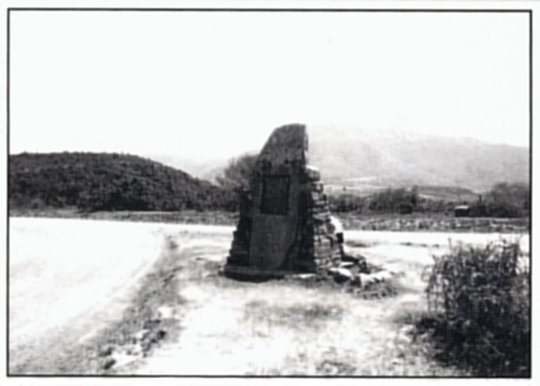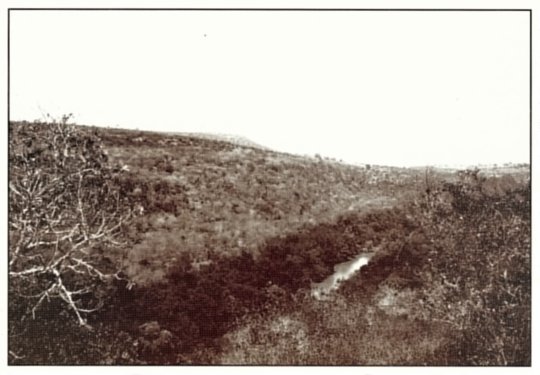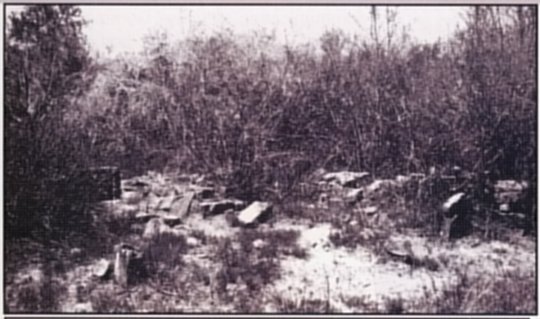

 The South African
The South African
Introduction
The traumatic events of the Sixth Frontier War - 'The Irruption of the Kafir [sic] Hordes', as a contemporary historian termed it - was the first major clash between the amaXhosa and the newly arrived British settlers in the Eastern Cape. Commencing with a devastating attack on the vulnerable white farms and villages just before Christmas in 1834, it lasted for the greater part of the next two years and left a legacy of mutual bitterness and mistrust that prefigured future conflicts.
One of the most tangible results of the war was the building of a string of forts along the frontier to protect the colony from future incursions. Part of this chain was Fort Cox, built by and named after the former Officer Commanding of the Cape Mounted Rifles, Major William Cox of the 75th Regiment. The work began on 1 July and was completed on 21 September 1835. It was carried out by a force of eighty Khoikhoi soldiers, at least six of whom were killed in ambushes during the construction. The site was abandoned in 1836 and rebuilt when the Seventh Frontier War commenced a decade later (www.sahistory.org.za/places/ fort-cox). It was not in this war, however, but in the next that it would play the part in Frontier history for which it is best remembered today.
Fort Cox
Like many fortifications of that time, Fort Cox would seem to have been an earth redoubt reinforced with stone. It was built to accommodate six Royal Artillerymen, one company of regular Infantry and 160 Colonial Coloured troops (The Forts of Frontier Country, www.grahamstown. co.za/index.php?pid=24). In form, it was described as 'an extensive square of low buildings' (Thomas Baines, 1848) and as 'a quadrangle of strong stone cottages and walls' (Robert Wilmot, 1856, wwwww.sahistory.org.za/places/fort-cox). The fort is located on a high peninsula formed by a loop of the Keiskamma River, about halfway between Fort Beaufort and King William's Town and on the road to Keiskammahoek. Some fifteen kilometres further west is Alice, which, in 1850, was a tiny village eclipsed in importance by the neighboring Fort Hare. To the east, on the edge of the Amatola range and within easy sight of the fort, was the Great Place of Sandile, paramount chief of the Rharhabe clan. Close by was the grave of Ngqika, father of Sandile and his half-brother, Maqoma.

The Eighth Frontier War
Of the many blunders that the arrogant and impulsive Cape Governor, Harry Smith, made during his disastrous four years as Cape Governor, underrating the traditional bonds of loyalty between the amaXhosa clans and their chiefs arguably had the most serious consequences. His humiliating treatment of the various chiefs fostered a deep, smouldering anger amongst the subjected peoples whom he was deluded enough to believe regarded him as their 'Inkhosi Inkhulu' (Supreme Chief). In the closing months of 1850, tensions were stretched to breaking point. The final straw was Smith's decision to depose and arrest Sandile, as well as his brother, Anta. This he announced, in typical blustering fashion, to a gathering of some 3 000 Ngqika and their chiefs near Fort Cox on 19 December. At the same time, he gave the assurance that the capture of the rebels would not be carried out by British troops. Rather, the Ngqika themselves would have to do so, thereby demonstrating their loyalty to the Crown and avoiding the fate of those who defied it.
On 24 December, sixteen years to the day since the mass amaXhosa invasion that had launched the Sixth Frontier War, a 700-man column headed by Lieutenant-Colonel George Mackinnon left Fort Cox and set out for the Boma Pass. The intention was to intimidate Sandile by staging an elaborate show of force rather than realistically seeking to capture him, but whatever its aim, the demonstration proved to be one act of arrogant provocation too many.
The Eighth Frontier War, destined to be the longest and by far the bloodiest of the frontier conflicts, commenced with a series of surprise attacks on various colonial strongpoints. Clearly, Sandile, Maqoma and their followers had prepared their plans well in advance, while, for their part, the Cape forces were caught hopelessly unprepared. Smith had steadfastly disregarded warnings that war was imminent. Now, ensconced in his supposedly temporary Fort Cox headquarters, he began receiving a steady string of reports of the unfolding disaster. The first was that Mackinnon's patrol had been ambushed and severely mauled in the Boma Pass, losing all its spare ammunition in the process. Next came the news that, on Christmas Day, the hamlets of Juanasburg, Woburn and Auckland had been overwhelmed, the adult male inhabitants of the latter two having been all but wiped out. Other outposts were also coming under attack. Nearly half of Fort White's small garrison - fifteen men of the 45th Regiment - were waylaid and killed at Debe Nek, their mutilated bodies, neatly laid out on the road in a grisly tableau, being discovered by Mackinnon's men during their circuitous retreat to Fort Cox.
The siege begins
Smith desperately needed to return to his King William's Town base, whence he could begin to address the unfolding crisis, but, in his depleted situation, he now found himself a virtual prisoner. For the Peninsular War and Waterloo veteran, hero of the battle of Aliwal and supreme military and political authority of the entire Cape Colony, it was a profoundly humiliating situation. Indeed, his dispatches dashed off during these early weeks of the war testify to his frustration and baffled fury. The situation of Fort Cox itself was decidedly precaribus. It was not provisioned to withstand a long siege, had no artillery and could only be supplied with water by hazardous expeditions to and from the Keiskamma River far below. A number of attempts were made by raiders to set the thatched roofs of the buildings ablaze, compelling most of the garrison to be on duty every night. There was also the possible treachery of the remaining black troops within the fort to worry about. Early on, the 'Kaffir [sic] Police' had deserted en masse, taking with them their cattle and horses and burning their station.
It now fell on the non-too-reliable shoulders of lieutenant-Colonel Henry Somerset in Fort Hare to try to rescue his chief from his predicament. On the night of 28 December, he sent out a party of Cape Mounted Riflemen (CMR) to bring some dispatches through to Smith, but these were soon compelled to return to Fort Hare in the face of overwhelming numbers. The following day, Somerset himself set out from Fort Hare, his intention being (as he subsequently reported) to 'open communication with the Commanderin-Chief'. With him were Sbme 220 men, comprising 150 infantry from the 2nd Battalion, 91st Regiment (Argyll and Sutherland Highlanders), seventy Coloured cavalry of the CMR and the fort's three-pounder gun. Given what was to unfold, it would have been far better to have left the latter behind.
Somerset's aim, a modest one in the circumstances, was to occupy a ridge some seven kilometres from Fort Hare, whence he could send dispatch riders through to Fort Cox to link up with Smith. Actually extricating the Governor from his prison does not seem to have featured in his plans. Perhaps Somerset, no doubt dismayed at being saddled with the unenviable role of acting Commander-in-Chief, was desperate simply to to divest himself of the onus of decision-making by putting the ball back in Smith's court.
From the outset, it was apparent that the advance would be strongly resisted. The amaXhosa were gathering in growing numbers on the surrounding slopes, which rang with their war cries, and, under Maqoma's skilful direction, they began closing in. The 91st advanced on the ridge in three companies, two extending to right and left and the third covering the gun. The position was taken after a sharp skirmish, during which Lieutenant A J Melvin was severely wounded, and the three-pounder duly commenced firing on the advancing warriors. The next move should have been to send out the dispatch riders but, having seen what he was up against, Somerset now had second thoughts. From the summit could be seen dense concentrations of the enemy streaming down from hills and up the valleys, many already gathering along the road below. Far from seeking merely to block the column's advance, their intention was clearly to attack it. Abruptly, Somerset decided to abort the operation and order the retreat back to Fort Hare. Indeed, had he delayed even a few minutes longer, his entire force might have been overtaken on the open plain before they could reach it. As it was, some of the amaXhosa were already close enough to use their assegaais, and already during the descent, a number of casualties were sustained.

Somerset's deadly retreat
Now commenced a gruelling retirement in the broiling heat, which, even for the Eastern Cape in December, was abnormal on that day. The ordeal was made all the worse for the infantrymen, who were cruelly overburdened with knapsacks, pouches, muskets and, most unforgivably of all, heavy, elaborate uniforms totally unsuited to the African climate. That they had been required to set out with so much unnecessary paraphernalia in the first place for what was supposed to be a limited operation is also inexplicable.
The three-pounder, being light and easy to swivel round to fire in all directions, was at first useful in slowing the amaXhosa advance, but it became a deadly liability when it broke down and Somerset refused to abandon it. Precious time was lost in strapping it to a limber and an even longer delay ensued when it fell over while crossing a drift. The delays were enough to enable the amaXhosa to complete their encirclement and close in.
What ensued next is dramatically described by Noel Mostert in his magisterial history, Frontiers (1992, p 1062): '''Now commenced the work of death" said one of the survivors. In less than fifteen minutes, two officers, the already wounded Melvin and the Adjutant, Lieutenant Gordon, as well as twenty soldiers were dead. Another officer and seventeen men were seriously wounded. The fighting was hand to hand, a brutal melee marked by the sort of acts of prompt individual heroism, and of miraculous survival, that such ferocious close combat inevitably produced, a situation where every man was immediately for himself, with no certain idea of what was happening except directly in front of him, and yet with the fate of a companion often suddenly intrusive upon his own struggles. The mere act of lifting their heavy muskets to use the bayonets required superhuman efforts from the exhausted soldiers ... '
The dead had to be left where they fell, 'piled amongst the black bodies of their furious enemies, now clasped together in one common and awful bond of death' as the contemporary journalist, Robert Godlonton, put it in his Narrative of the Kaffir [sic] War of 1850-51-52. The infantrymen probably would have been annihilated altogether had a force of about 100 men not been sent from Fort Hare to their aid (Mostert, 1992, p1063).
Somerset's repulse was one of the most severe defeats suffered by the Colonial forces in all of the Frontier Wars, but it was destined to be oddly neglected by later historians. Mostert, the first to give it the attention it merited, comments that it was a battle that 'fell into complete obscurity', accorded little more than a cursory mention in subsequent works on the period. 'It was, so to speak, an event without a name,' he wrote, 'a fourhour-long retreat along a wagon road, an agonizing struggle, yard by yard, mile by mile. It was a severe humiliation, and Henry Somerset's judgment deserved censure, all of which may have helped to dim its historic memory. Yet not until Rorke's Drift some eighteen years on would the British army again fight and die in such a brave, cruel and intimate scuffle on the African veld' (Mostert, 1992, p1063).
That night, a distraught Somerset was finally able to get a message through to Smith, informing him of his failure and urging him not try to break out with infantry as he would be 'chopped to bits'.
Whatever else could be said of the Governor, his personal courage could not be questioned. On 31 December, decked out in the uniform of the Cape Mounted Riflemen and accompanied by an escort of those troops, he embarked on the hazardous ride to King William's Town and safely reached it after evading an attempt to stop him at Debe Nek (Harington, 1974).
Relief at last
After Smith's escape, the blockade of Fort Cox continued for another full month. The garrison, by then in a greatly weakened state, was only relieved on 31 January 1851 (www.grahamstown.co.za/index. php?pid=24). Thereafter, Fort Cox took something of a back seat in the war, although sporadic clashes took place in its vicinity virtually until its conclusion. Of the regular troops who manned it, six were killed in action and eleven succumbed to disease (Bagshawe-Smith). The number of black and coloured auxiliaries who were lost was, as usual, not recorded.
In 1876, a military report recorded that Fort Cox was now in ruins. It was not rebuilt, even when the Ninth, and last, Frontier War broke out two years later. When the author visited the site a few years ago, there was little to see beyond a bare outline of stones and part of what may have been an outside oven. Like the small and hopeless derelict military cemetery nearby, the whole had all but been taken over by thorn trees and bush.

The name Fort Cox nevertheless endures, through the adjoining Fort Cox College of Agriculture and Forestry. Even a physical remnant of the old fort has survived in a way. When the original College buildings were erected in the 1920s, some of its stones were incorporated into their foundations (see information pamphlet, Fort Cox College). This provides a rather moving 'spears into pruning hooks' epilogue to the Fort Cox story.
BIBLIOGRAPHY
Printed Sources
Harington, Andrew L, 'Sir Harry Smith' in Military History Journal, Vol 3 No 1, June 1974.
Milton, John, The Edges of War: A history of frontier wars, 1702-1878 (Juta, 1983).
Mostert, Noel, Frontiers: The Epic of South Africa's Creation and the Tragedy of the Xhosa People (Pimlico, 1992).
Smith, H G W, and Moore-Smith, G C, The autobiography of Lieutenant-General Sir Harry Smith Bart, G C B (John Murray, London, 1903).
Online Sources
'The Forts of Frontier Country', http://www.grahamstown. co.za/index.php?pid=24, downloaded February 2011.
'Fort Cox', http://www.sahistory.org.za/places/fort-cox. downloaded February 2011.
Return to Journal Index OR Society's Home page
South African Military History Society / scribe@samilitaryhistory.org